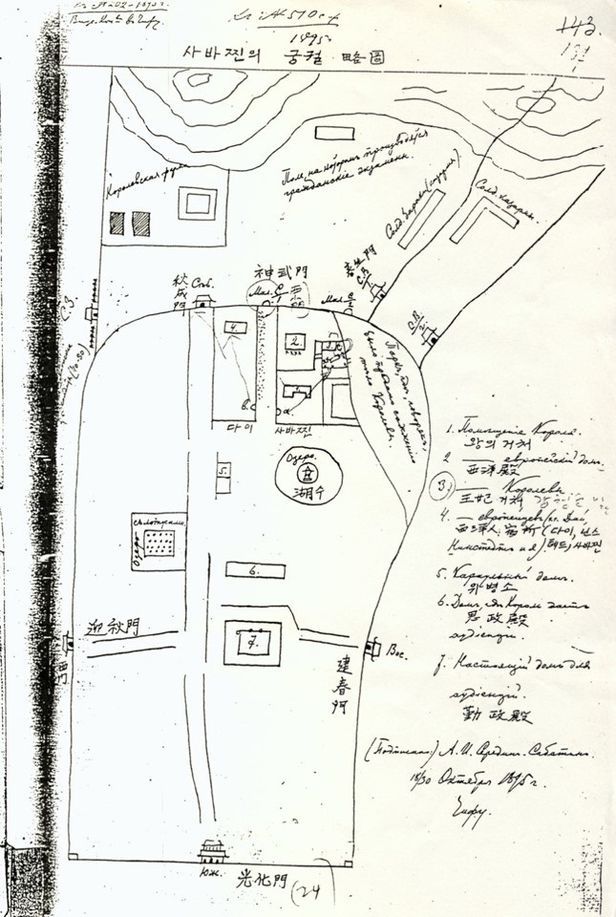 |
A copy of Russian architect Afanasy Ivanovich Seredin-Sabatin’s testimony documenting the assassination of Empress Myeongseong (CHA) |
An exhibition titled “The Life and Works of Russian Architect Afanasy Seredin-Sabatin” opened in Seoul at the palace Deoksugung on Tuesday, marking the 30th anniversary of diplomatic relations between South Korea and Russia.
Afanasy Ivanovich Seredin-Sabatin arrived in the port city of Incheon as a tidewaiter and stayed on in the country, working as an architect from 1890 to 1904. The exhibition, which runs through Nov. 11 in Jungmyeongjeon -- a building within the palace that Seredin-Sabatin designed -- presents photos, videos and model buildings documenting the architect’s life and work.
“As well as being one of the people who introduced modern culture to Korea, Sabatin is known as a witness to the assassination of Empress Myeongseong in 1895,” CHA head Chung Jae-suk said during the press conference at Jungmyeongjeon on Monday.
The exhibition begins in a darkened hall with a written introduction explaining how Seredin-Sabatin witnessed Japanese assassins killing Empress Myeongseong (1851-95), also known as Queen Min, in Gyeongbokgung.
“At the time, the Japanese assassins asked Sabatin about the whereabouts of the queen. In this hall, we show pictures of the document that he wrote about the incident after departing for China,” CHA curator Lee Jung-soo said. “This document is important because before it came out, Japan had denied that any such incident took place.”
The second part of the exhibition shows a model of the Russian Legation and proof that Seredin-Sabatin took part in its construction. The Russian Legation is where King Gojong fled to in 1896 along with his young son.
In the last section of the exhibition, there are blueprints and miniatures of 12 buildings.
“Among these, only two -- Gwanmungak of Gyeongbokgung and the Russian Legation -- are confirmed to have been designed by the Russian architect. Others are currently believed to have been designed by him,” the CHA curator added.
More information about the exhibition is available on the Deoksugung website (www.deoksugung.go.kr).
Meanwhile, Russian Ambassador Andrey B. Kulik, speaking at Monday’s press conference, said there would be more events next year to mark the 30th anniversary since most of the programs scheduled for this year were canceled due to the pandemic.
By Song Seung-hyun (
ssh@heraldcorp.com)








![[Today’s K-pop] Blackpink’s Jennie, Lisa invited to Coachella as solo acts](http://res.heraldm.com/phpwas/restmb_idxmake.php?idx=644&simg=/content/image/2024/11/21/20241121050099_0.jpg)